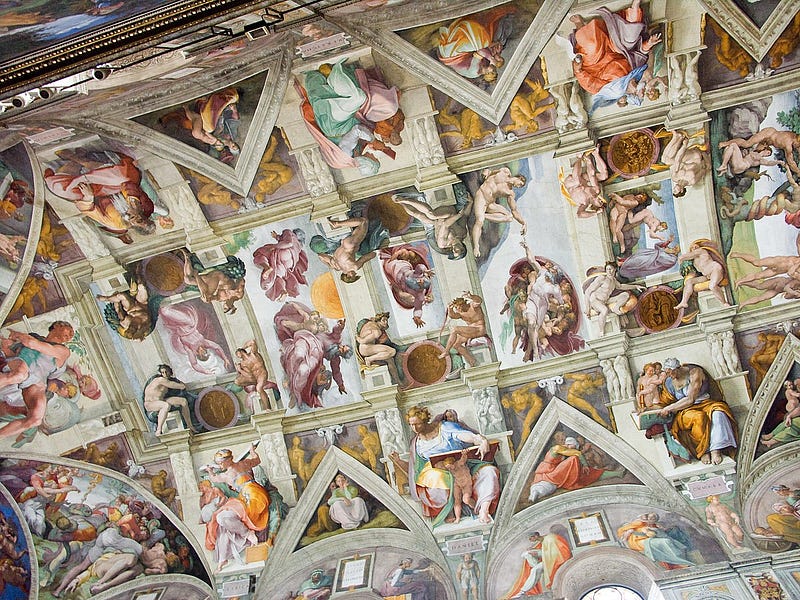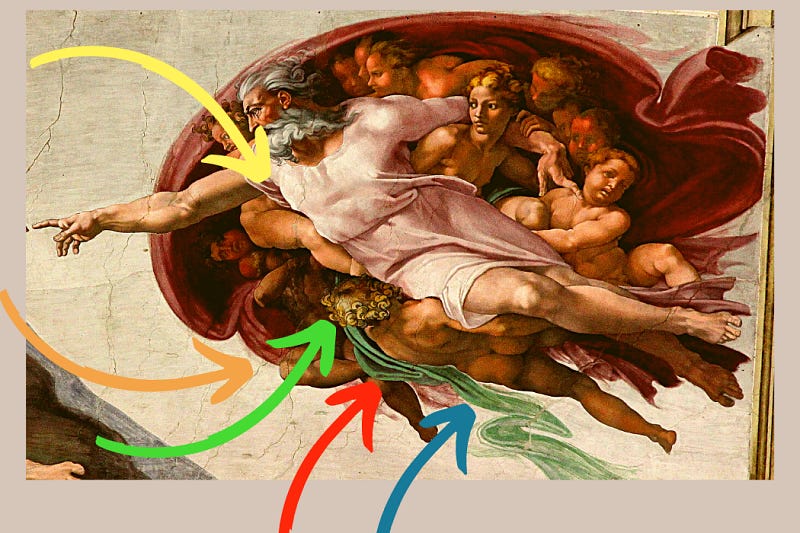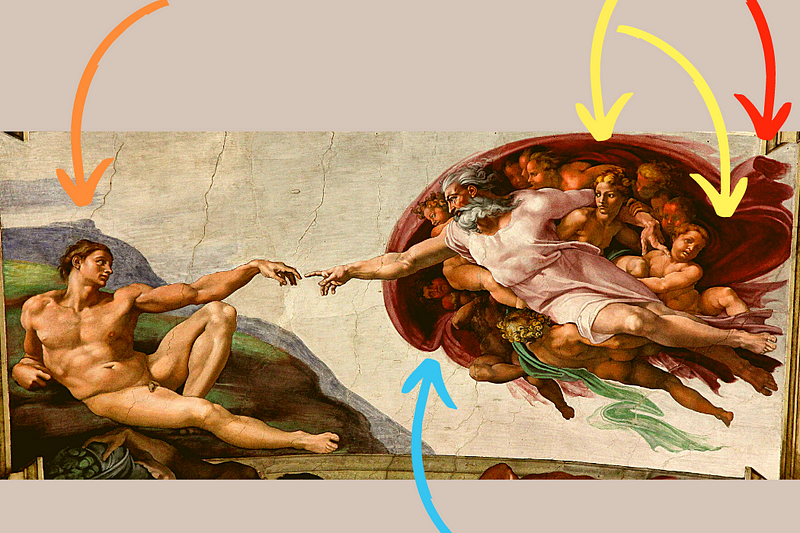Michelangelo's "Creation of Adam": Unraveling Hidden Meanings
Written on
Chapter 1: Overview of "The Creation of Adam"
Michelangelo’s iconic fresco, “The Creation of Adam,” features an elderly God extending His arm toward a youthful Adam. Positioned on the left, Adam is on the verge of touching God’s finger, symbolizing the impartation of life. The Biblical assertion, "God created man in His own image" (Genesis 1:27), resonates deeply within this artwork.
Recognized as one of the most celebrated pieces in art history, it was painted by Michelangelo Buonarroti between 1508 and 1512. Every year, millions flock to the Sistine Chapel in Vatican City to witness this masterpiece.
Within the artwork, God is depicted surrounded by angels, cradled in an oval red cloth as He reaches out to Adam, who lies upon freshly formed earth. Notably, some art critics, including Walter Pater, suggest that the figure under God’s left arm may represent Eve, while others posit that it is the Virgin Mary, characterized by a masculine form. The entire Genesis composition spans over 500 square meters and features more than 300 figures, a testament to Michelangelo's dedication and skill.

Michelangelo initially hesitated to undertake the task of painting the chapel's ceiling, perceiving it as an overwhelming challenge. He even suggested that Raffaelo take on the project. However, Pope Julius II insisted on Michelangelo’s involvement, and he ultimately completed the work independently over four and a half years.
Chapter 2: Michelangelo's Medical Knowledge
One might wonder how Michelangelo possessed such profound medical understanding during an era when many lacked basic literacy. In the Renaissance spirit, he engaged in the dissection of corpses to study human anatomy, similar to the practices of his contemporary, Leonardo da Vinci.
During this time, many women died in childbirth, leading to ample opportunities for artists to observe human anatomy through autopsies. Although dissection was once prohibited by the Catholic

